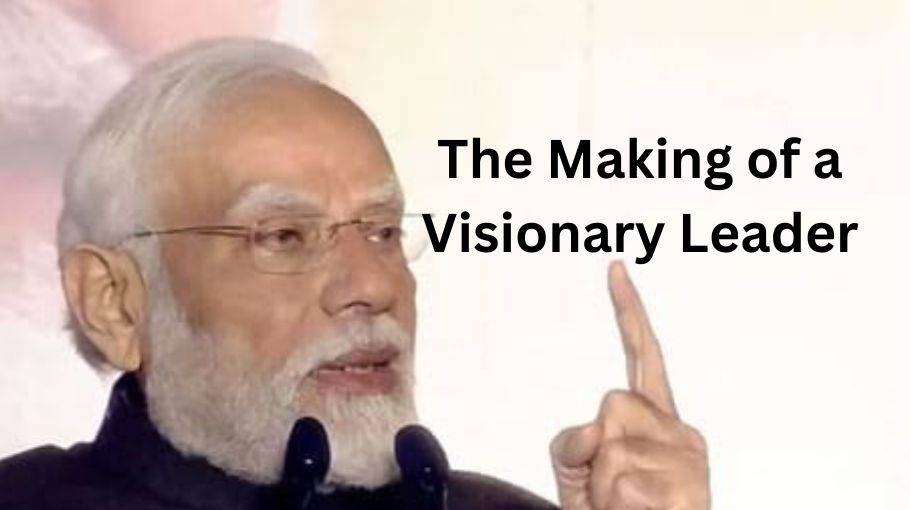In the vast tapestry of Indian politics, few figures have left an indelible mark as significant as Narendra Modi, the 14th Prime Minister of India. Born on September 17, 1950, in Vadnagar, a small town in Gujarat, Modi’s journey from being a chaiwala (tea seller) to the pinnacle of political power is nothing short of extraordinary. This biography delves into the fascinating early life, chaiwala anecdotes, and the symbolic significance of his signature attire – the kurta.
ALSO READ: Early Detection of Liver Cancer
Early Life of Narendra Modi
Narendra Damodardas Modi was born into a modest family, with his father, Damodardas Mulchand Modi, working as a tea-stall owner and his mother, Hiraben Modi, a homemaker. The family struggled financially, and young Narendra’s early life was marked by the pursuit of education while helping his father at the tea stall. His childhood was infused with values of hard work, discipline, and a deep sense of nationalism.
To subscribe please click tau.id/2iy6f and access our live channel.
Despite facing economic challenges, Modi’s academic prowess shone through. He showed an early interest in debates, drama, and organizational activities during his school years. As a teenager, he began exploring the philosophies of Swami Vivekananda and the Rashtriya Swayamsevak Sangh (RSS), ideologies that would later shape his political journey.

Chaiwala Story:
The term “chaiwala” has become synonymous with Modi’s remarkable journey, serving as a powerful symbol of his humble beginnings. In the early 1960s, a young Modi, armed with a kettle and a passion for service, began assisting his father at the tea stall. The tales of his chaiwala days have been recounted by Modi himself, emphasizing the struggles, sacrifices, and lessons learned during this period.

Modi often reminisces about the valuable insights gained from interacting with people from diverse backgrounds at the tea stall. These interactions not only honed his communication skills but also provided a grassroots understanding of the challenges faced by the common man. The chaiwala stories have become a crucial part of his political narrative, resonating with millions who appreciate the power of perseverance and determination.

Kurta of Narendra Modi
One of the most visually striking aspects of Narendra Modi’s public persona is his choice of attire – the humble kurta. Beyond being a matter of personal style, Modi’s kurta has evolved into a symbol that reflects his connection with the masses, cultural roots, and a conscious effort to project simplicity.
The Prime Minister’s wardrobe choice is deliberate, often adorned with vibrant colors and intricate patterns. Each kurta tells a story, representing different regions of India during his visits, promoting traditional crafts, or commemorating important occasions. The distinctive pairing of the kurta with a half-sleeved jacket has become an iconic look, embodying a blend of tradition and modernity.
Political career of Narendra Modi
Modi’s foray into politics began in the early 1970s when he joined the RSS, subsequently becoming a full-time pracharak (campaigner) for the organization. His journey within the Rashtriya Swayamsevak Sangh laid the foundation for his entry into mainstream politics. Rising through the ranks of the Bharatiya Janata Party (BJP), Modi held key organizational positions before assuming the role of Chief Minister of Gujarat in 2001.
The Godhra train burning incident in 2002, followed by the communal riots in Gujarat, cast a long shadow on Modi’s political career. While critics point to these events as controversial chapters, supporters argue that they do not define the entirety of his governance. Modi’s leadership in Gujarat was marked by economic development, infrastructure growth, and initiatives that garnered both praise and criticism.
Prime Minister Narendra Modi
Narendra Modi’s ascent to the position of Prime Minister of India in 2014 marked a historic moment. The election campaign was marked by the promise of ‘Achhe Din’ (Good Days) and a vision for transformative change. His leadership style, characterized by decisiveness and a focus on economic reforms, set a new tone for the nation.
Modi’s tenure witnessed key policy initiatives such as demonetization, the Goods and Services Tax (GST), and the Pradhan Mantri Jan Dhan Yojana, aimed at financial inclusion. His emphasis on ‘Make in India,’ ‘Swachh Bharat Abhiyan’ (Clean India Campaign), and ‘Digital India’ reflected a commitment to modernization and development.
Global Presence of NAMO
On the international stage, Modi’s diplomatic efforts have sought to position India as a global player. Engaging with world leaders, he has worked towards strengthening bilateral ties, addressing climate change, and asserting India’s stance on global forums. The ‘Howdy Modi’ event in the United States and the ‘Namaste Trump’ event in India underscored his ability to connect with global audiences.
Challenges faced by Prime Minster Modi
While Modi enjoys widespread popularity, his leadership has not been without its share of challenges and criticisms. The handling of issues such as the economic slowdown, the implementation of demonetization, and the management of the COVID-19 pandemic have faced scrutiny. Additionally, concerns about religious polarization and attacks on freedom of expression have sparked debates about the direction of India’s political landscape.
Legacy and Future:
As Narendra Modi continues to shape the destiny of India, his legacy remains a subject of ongoing discourse. Supporters applaud his decisive leadership, economic reforms, and efforts to position India as a global force. Critics, on the other hand, raise concerns about democratic values, social harmony, and the impact of policy decisions on marginalized communities.
Re-election and Continued Reforms:
In 2019, Narendra Modi secured a decisive re-election, reinforcing the widespread appeal of his leadership. The Bharatiya Janata Party’s (BJP) victory showcased the electorate’s confidence in Modi’s ability to steer the nation forward. The election campaign highlighted his government’s achievements and laid out ambitious plans for the future, focusing on infrastructure development, economic growth, and social welfare.
Modi’s second term saw the implementation of several landmark policies. The abrogation of Article 370, revoking the special status of Jammu and Kashmir, and the passage of the Citizenship Amendment Act (CAA) were among the government’s bold moves. These decisions, while applauded by some as necessary for national security and uniformity, sparked debates and protests, with critics raising concerns about human rights and religious freedoms.
Narendra Modi Vision for a Digital India:
One of Modi’s flagship initiatives, ‘Digital India,’ underscores his commitment to leveraging technology for societal advancement. The push for a digital economy, widespread internet connectivity, and the promotion of digital literacy aim to bridge the urban-rural divide and create a more inclusive society. Initiatives like Aadhaar, the world’s largest biometric ID system, and the UPI (Unified Payments Interface) have revolutionized financial transactions, reducing the dependence on cash.
The COVID-19 pandemic further accelerated the adoption of digital technologies in governance and public services. The Aarogya Setu app, contact tracing and health monitoring tools, and the use of telemedicine highlighted the government’s proactive approach to combating the challenges posed by the global health crisis.
Challenges faced by Narendra Modi
Narendra Modi’s leadership has faced formidable challenges, including the economic fallout of the pandemic, the agrarian crisis, and ongoing border tensions with neighboring countries. The implementation of demonetization in 2016, aimed at curbing black money and corruption, received mixed reviews for its immediate impact on the economy. Critics argued that the sudden withdrawal of high-denomination currency led to disruptions, particularly in the informal sector.
The handling of the COVID-19 crisis brought both praise and criticism. The lockdown, announced in March 2020, aimed to curb the spread of the virus but had significant socioeconomic repercussions. The mass migration of laborers, disruptions in supply chains, and the strain on healthcare infrastructure became focal points of public discourse. However, the vaccination drive, one of the largest in the world, garnered international recognition.
Global Recognition and Engagements:
Narendra Modi’s diplomatic endeavors have positioned India as a key player on the global stage. The ‘Neighborhood First’ policy, fostering stronger ties with neighboring countries, and the ‘Act East’ policy, enhancing relations with Southeast Asia, exemplify his strategic approach to foreign affairs.
Participation in international forums, such as the G20 and BRICS (Brazil, Russia, India, China, South Africa), has provided platforms for India to assert its views on global issues. Modi’s emphasis on climate change and renewable energy, as evident in the International Solar Alliance, demonstrates a commitment to environmental sustainability.
Chai Pe Charcha: Connecting with the Masses:
The ‘Chai Pe Charcha’ (Discussion Over Tea) initiative during the election campaigns encapsulates Modi’s unique style of connecting with the masses. Departing from traditional political rallies, these informal gatherings at tea stalls allowed him to engage directly with citizens, understanding their concerns, and addressing them in a more personal manner. This approach resonated with many, portraying Modi as a leader accessible to the common man.
Narendra Modi’s journey from a chaiwala to the Prime Minister of India is a testament to the transformative power of perseverance, dedication, and visionary leadership. The chaiwala stories and the symbolic significance of the kurta add layers to his persona, creating a narrative that resonates with diverse segments of the population. As he navigates the complex landscape of Indian politics, Modi’s legacy continues to unfold, leaving an indelible mark on the nation’s history




